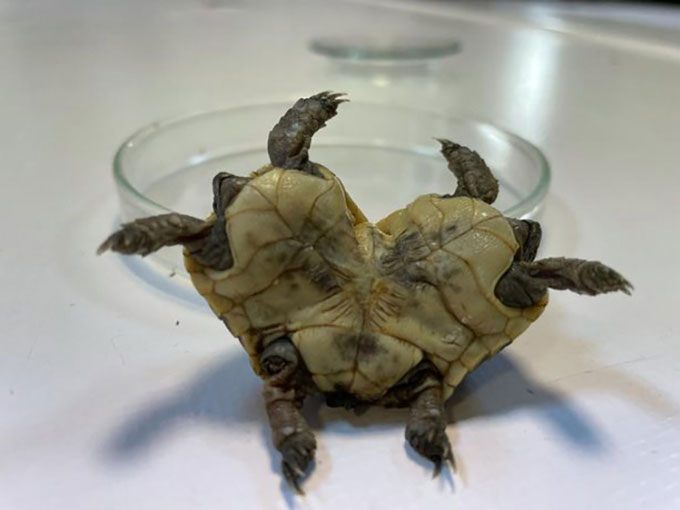Residents of Turkey accidentally discovered a rare conjoined turtle while soaking in the hot springs at the UNESCO World Heritage site of Pamukkale.
The video, shared on November 22 by Dr. Eyup Baskale from Pamukkale University, shows the turtle—approximately 4 weeks old—struggling to move due to having two conjoined bodies, each with an independent head and six legs.
A local found it at the Pamukkale hot springs in southwestern Turkey and donated it to Pamukkale University. Baskale noted that this type of deformity makes it difficult for the creature to survive in the wild, so he decided to keep it for care.

The two-headed deformity makes it hard for the turtle to survive in nature. (Photo: Newflash).
Despite having two heads and two bodies, the turtle has only one shared digestive system and a single cloaca. This specimen is extremely rare, providing an opportunity to study the phenomenon of polycephaly in terrestrial turtles.
Polycephaly, also known as multiple heads syndrome, is a type of mutation that occurs in both humans and animals. There have been many documented cases of two-headed turtles worldwide, but in most instances, they only have one body.


















































